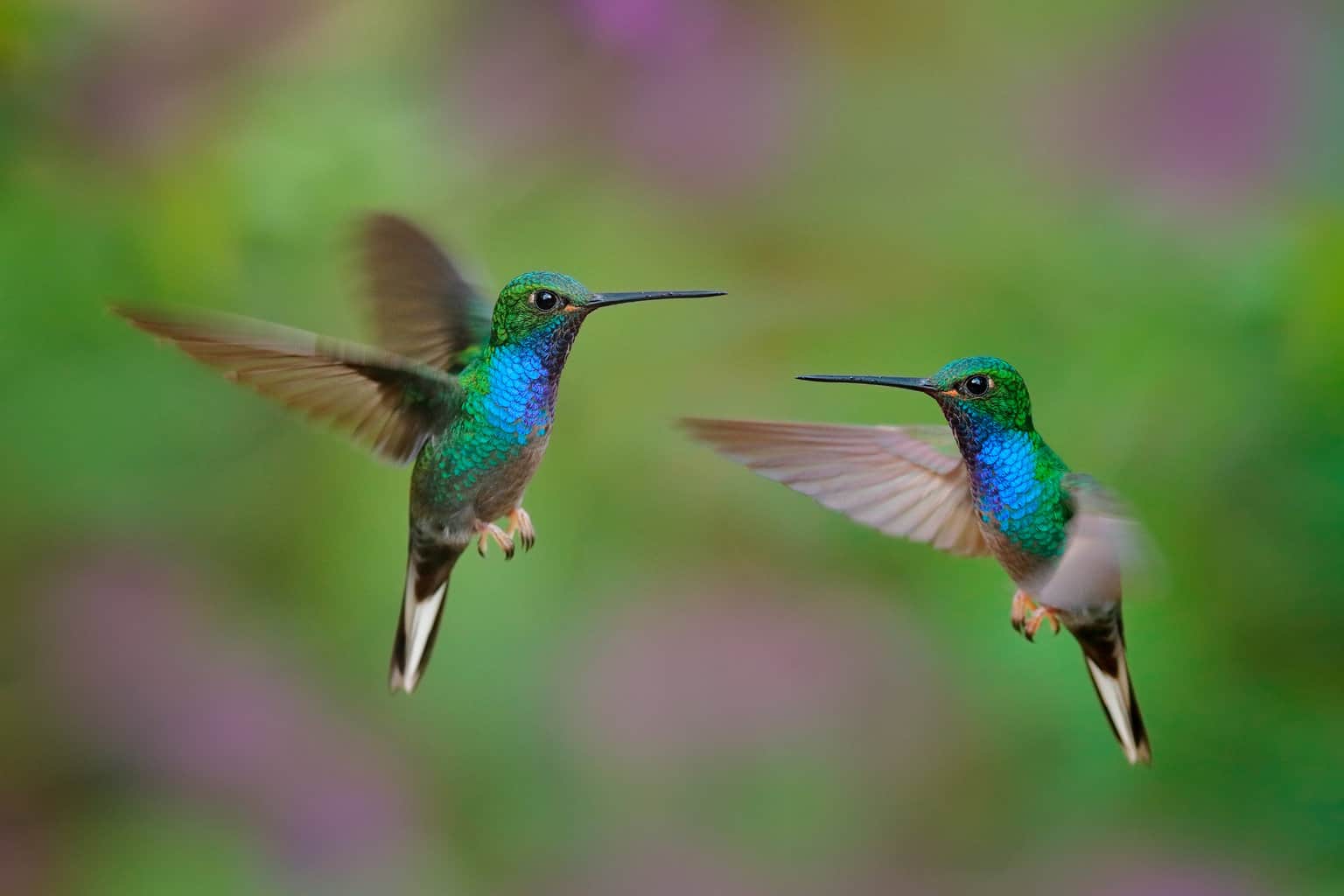If you see hummingbirds flitting around your garden feeders, or putting on their amazing acrobatic courtship displays, one of the first questions that springs to mind is how fast do hummingbirds fly? And how quickly are those wings actually beating?
The truth is, hummingbird flight is even more astounding than you might have imagined.
What Speed Do Hummingbirds Fly?
Hummingbirds can fly astonishingly fast. These amazing birds regularly reach speeds of 20 to 30 miles per hour. But, as if that were not enough, they can reach almost triple that speed during their courtship displays.
How fast hummingbirds fly depends on which species we are discussing. But the very fastest hummingbirds have been shown to achieve an average maximum velocity of 90 feet per second. That’s over 60 miles per hour!
These unbelievable figures were measured by researchers at UC Berkeley studying the male courtship dives of Anna’s hummingbird. This speed was the highest recorded speed for an invertebrate, relative to size.
The acceleration and deceleration during such dives are also astonishing. The birds experience g-forces that would make the average person blackout!
How Fast Do Hummingbirds’ Wings Go?
The wing speed of hummingbirds while in flight is also truly remarkable. Their wing speed varies depending on the species. The smaller the species, the higher the wing beat count.
The largest species of hummingbird, the Giant hummingbird, has a count of 12 wing beats per second. The smallest, the Bee hummingbird of Cuba, has a count of up to 80 wing beats per second.
Common North American hummingbird visitors are somewhere in the middle of the range. For example, the Ruby-throated hummingbird flaps its wings around 50 times per second. And the Rufous hummingbird beats its wings a little faster – at around 52-62 wing beats per second.
Some species flap their wings even faster during their courtship displays. Scientists must use high-speed photography to capture motions too swift to see with the naked eye.
Other Amazing Things About Hummingbird Flight

Hummingbird flight is not just astounding for the speeds these birds can attain. It is also extremely varied. The birds can not only fly forward at great speed. They can also hover, an adaptation that allows them to obtain nectar from flowers and feeders.
They can also fly backward. And even, for brief moments, fly upside down. This acrobatic flight is something that only very few birds can do.
How Fast Do Hummingbirds Fly Backwards?
They have been known to fly – even backward -at over 30 miles per hour.
Do Hummingbirds Ever Stop Flying?
Some people believe that hummingbirds must fly non-stop. And indeed, these birds are in flight through much of the daylight hours. However, they do perch on the thin tips of branches or twigs or perches that you have placed for them near or at a feeder.
How frequently they will perch, how long they will perch, and the precise positions they will choose depend on the particular species. But if you want to make hummingbirds feel at home, it is important to provide places for them to perch in your garden.
Typical hummingbirds will also usually stop flying during the dark hours, at night. After the sun goes down, they will find a safe and secure perch and enter a period of torpor. Sometimes they enter a light torpor, sometimes a deeper one.
Torpor is a state of rest, during which their metabolic rates slow and their temperatures drop. This period is essential for energy conservation and helps the birds cope with cold, or sometimes very hot, temperatures.
During a state of torpor, hummingbirds look almost dead and may even be observed hanging upside down on their branches. But in the morning, after they ‘come round’ from this state, they will resume their frantic quest for food and return to the wing once more.
How Far Can Hummingbirds Fly Without Stopping?
Amazingly, hummingbird flight is not just impressive over short distances and short periods. Migrating species such as the Ruby-throated hummingbird have been shown by scientists to fly an astonishing 1370 miles without taking a break.
To put that into perspective, they can fly 29 million times the length of their own body without rest.
Many hummingbirds regularly travel over 1200 miles in a single push. They may even fly non-stop through the night on occasion when crossing large bodies of water, like the Gulf of Mexico, for example.
So the next time you see hummingbirds zooming past in your garden or hovering to sip nectar from a flower, spare a little time to consider this marvel of the natural world.

